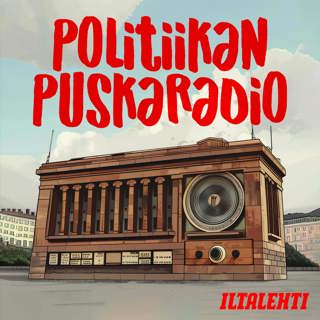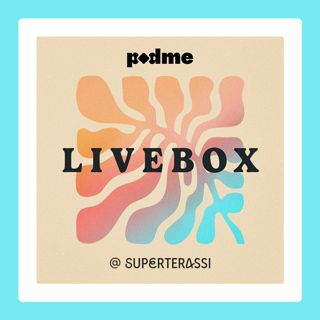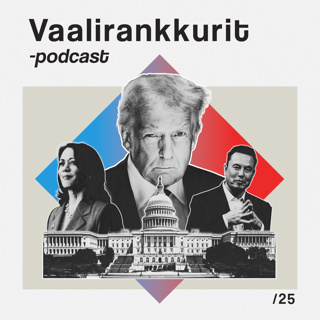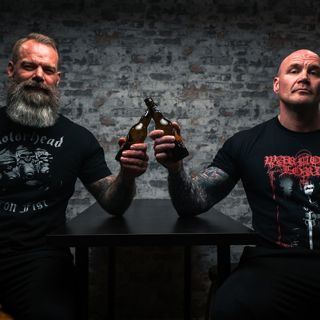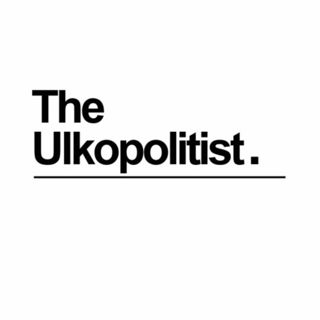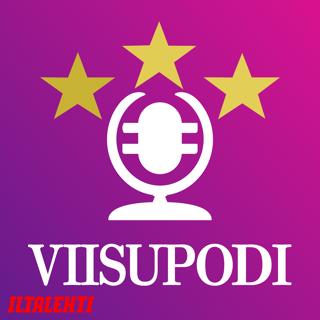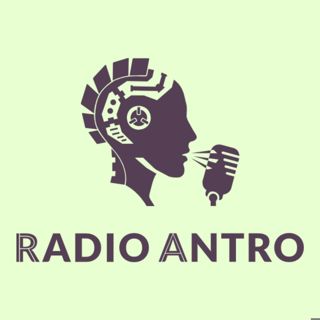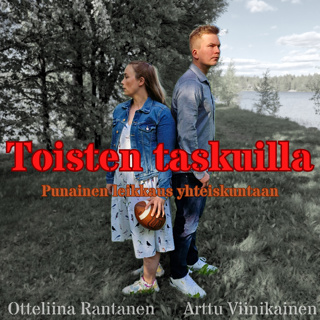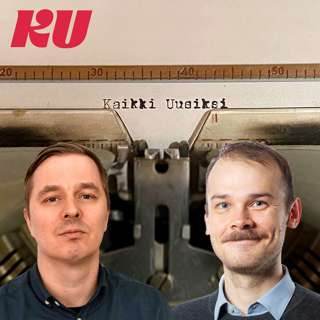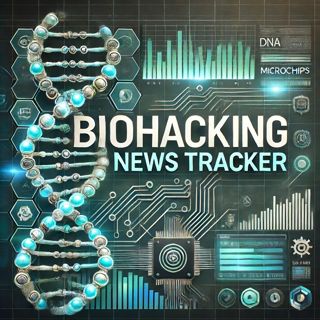
"Biohacking Revolutionizes Health and Fitness with AI-Powered Workouts and Holistic Wellness Optimization"
Biohacking is revolutionizing the way we approach health and fitness, particularly through the integration of advanced artificial intelligence (AI) and cutting-edge technology in workout routines. At the forefront of this innovation are facilities like Upgrade Labs in Park City, where Logan Jones-Olson and Kristen Roscher are using AI-assisted equipment to help users achieve maximum results in minimal time. This approach not only personalizes the workout experience but also enhances efficiency, making workouts more targeted and effective.The concept of biohacking extends beyond just fitness; it encompasses various aspects of health optimization, a topic that was thoroughly explored at the Biohackers World Conference & Expo in Miami, Florida. This event brought together leading biohackers, wellness visionaries, and entrepreneurs all focused on utilizing technology and biology to optimize health, demonstrating the growing interest and potential in this field.In the realm of celebrity health and wellness, biohacking has also found a prominent advocate in Tom Cruise. Known for performing his own stunts well into his sixties, Cruise reportedly considers biohacking a significant part of his regime to maintain his youthful appearance and physical capabilities. This highlights a trend where not only health enthusiasts and experts but also high-profile individuals are exploring and adopting biohacking methods for health and longevity.The growing interest in biohacking signals a shift towards more personalized, technology-driven solutions in health and fitness. It promises more control over one's physical and mental health outcomes, aligning well with today's fast-paced, technology-oriented lifestyle. Whether for enhancing personal fitness, preventing aging, or overall health optimization, biohacking could potentially lead to revolutionary changes in how we manage our health and well-being.This content was created in partnership and with the help of Artificial Intelligence AI
1 Loka 20242min

Biohacking Emerges as Promising Path to Enhance Health and Longevity
Biohacking emerges as one of the trending approaches amongst those eagerly seeking to improve their health, optimize their bodies' performance, and even slow the aging process. This practice, which can vary significantly in its complexity and nature, aligns modern science and lifestyle tweaks to influence the body’s biology in desirable ways.The pursuit of eternal youth or at least youthful vitality well into older age is an especially intriguing aspect of biohacking. Here are eight simple methods often adopted in the biohacking community to help turn back the biological clock:1. **Nutrition Optimization**: Tailoring diet based on genetic makeup and gut microbiome analysis is a popular biohacking strategy. Consuming anti-inflammatory and antioxidant-rich foods can reduce cellular damage and support the body's natural rejuvenation processes.2. **Intermittent Fasting**: This involves cycling between periods of eating and fasting. It is believed to enhance metabolic health, improve brain function, and possibly extend lifespan by triggering cellular repair processes such as autophagy.3. **Exercise with Oxygen Therapy (EWOT)**: This technique enhances oxygen intake while exercising to potentially increase cellular utilization of oxygen, thus improving energy production and reducing fatigue.4. **Cold and Heat Therapies**: Regular exposure to cold through cold showers or ice baths and to heat through sauna sessions can boost mitochondrial function and resilience, enhance circulation, and foster detoxification.5. **High-Quality Sleep**: Sleep is paramount in the regeneration and repair of cells. Biohackers often use gadgets to monitor sleep patterns and employ strategies like reducing blue light exposure before bedtime to improve sleep quality.6. **Mindfulness and Meditation**: Stress-management through practices like meditation and yoga directly impacts hormonal balance and inflammation levels in the body, which are critical factors in ageing.7. **Supplementation**: Biohackers often customize their intake of vitamins, minerals, and other supplements like resveratrol, NAD+, and omega-3 fatty acids, aiming to support cellular health and longevity.8. **Use of Biohacking Devices**: Tools like PEMF mats and infrared sauna blankets are praised by many within the biohacking community. These devices are believed to enhance cellular regeneration, improve blood flow, and aid in detoxification, contributing significantly to the slowing down of the ageing process.While biohacking can provide paths to enhanced health and longevity, it is necessary to approach such practices with caution. It's advisable to consult with healthcare providers or professionals in the field of biohacking before embarking on any new health regimen, especially when involving supplements and new technologies.In the heart of Silicon Valley, biohacking takes on an aspect related to optimizing cognitive function and work performance. There, sleep, coffee consumption, and the use of caffeine pills, even at night, are manipulated to maximize productivity.The allure of biohacking lies in its promise of self-improvement and possibly a longer, healthier life. However, it's essential to balance enthusiasm with informed caution and professional guidance. Always ensure that the chosen methods are safe and suitable for your specific health condition to avoid potential adverse effects.This content was created in partnership and with the help of Artificial Intelligence AI
29 Syys 20243min

Headline: Biohacking Revolution: From Brain Enhancement to DIY Gene Editing
Biohacking has emerged as a fascinating frontier in the intersection of science and self-improvement, with enthusiasts and experts pushing the boundaries of what the human body and mind can achieve through technological and biological manipulation. This article explores various realms of biohacking, from high-tech mental enhancement systems such as BrainTap to the democratization of sophisticated biotechnological tools like CRISPR for amateur use.BrainTap, a device that claims to rewire the brain using a combination of light and sound waves, represents a niche but rapidly growing segment of biohacking focused on cognitive enhancement. BrainTap's headset uses binaural beats and light patterns to facilitate a meditative state, potentially improving mental clarity and stress relief. The concept of entraining brain activity to external stimuli is not new; however, BrainTap packages it in a consumer-friendly product, making brain optimization more accessible to the general public.Turning to the more hands-on aspect of biohacking, DIY biology or DIYbio is gaining momentum among tech-savvy enthusiasts interested in genetic engineering. The technology at the heart of this movement is CRISPR, a sophisticated gene-editing tool that has transformed scientific research and therapeutics. Remarkably, individuals like Josiah Zayner have popularized DIY CRISPR kits that allow people to experiment with basic genetic modifications from the comfort of their own homes. For instance, Zayner’s company, The ODIN, offers kits for hobbyists to edit bacteria's genomes, making advanced biology experiments not only affordable—with kits costing as little as $2—but also approachable.Educational institutions are also folding biohacking into their curricula. For example, the University of Ottawa's iGEM team is an enthusiastic proponent of this intersection of biology and engineering. iGEM (International Genetically Engineered Machine) competitions inspire students to create synthetic biology solutions to real-world issues. Inspired by real-time challenges such as drug shortages, these students are bio-hacking potential solutions, which not only contributes to their educational growth but also potentially paves the way for substantive scientific contributions.Each facet of biohacking—from the individual pursuit of cognitive enhancement with devices like BrainTap to collective efforts in educational settings like iGEM—illustrates a broader trend towards greater personal and collective empowerment in health and biological sciences. These practices raise important questions about ethics, regulation, and the nature of scientific engagement by non-professionals. As this field continues to evolve, it will undoubtedly confront challenges related to safety, privacy, and the implications of increased access to powerful biotechnological methods. However, it also represents a promising avenue for innovation and personal development, reflective of a growing desire among many to take control of their own biological destiny.This content was created in partnership and with the help of Artificial Intelligence AI
28 Syys 20243min

Biohacking Boom: Optimizing Health, Performance, and Longevity
Biohacking has become a prominent trend among those seeking to optimize their health, enhance performance, and perhaps most intriguingly, extend their lifespan. This practice intertwines technology, biology, and self-experimentation, aiming to manipulate the body's biology through various means such as dietary changes, fitness regimens, and technological implants. Influential figures like Anne Mahlum, founder of Solidcore, and Dave Asprey, renowned for promoting the Bulletproof lifestyle, have particularly spotlighted biohacking’s growing appeal, with investments that highlight its burgeoning intersection with technology and fitness.Dave Asprey, often referred to as a biohacking guru, is a key investor in OxeFit, a company that provides AI-driven fitness platforms. This integration of sophisticated technology with traditional fitness practices represents a new frontier in biohacking, suggesting a future where AI not only tracks but also predicts and enhances human biological processes through personalized fitness routines.Moreover, the appeal of biohacking extends beyond fitness into the realm of general well-being and longevity. For instance, at an exclusive event hosted by Elledgy Media Group and Charlotte Tilbury in Venice, discussions centered on personalized biohacking solutions that promote longevity and health enhancement. Such events highlight the growing commercial and lifestyle interest in biohacking principles and their applications.Travel also emerges as an interesting component in the quest for longevity. Frequent travelers often adopt biohacking techniques to combat the physical and mental stresses associated with travel, such as jet lag, dietary changes, and disrupted sleep patterns. Techniques might include strategic light exposure to adjust the body clock, supplements to support immune function, or specific exercise regimes to mitigate the effects of long periods of sitting.Biohacking's rise in popularity reflects a broader shift towards proactive, personalized health management. Individuals are increasingly willing to explore novel, sometimes controversial, methods of enhancing their body's capabilities and extending their longevity. As technology advances and more research surfaces, the fusion of science, health, and technology through biohacking will likely play a significant role in shaping the future of personal wellness.This content was created in partnership and with the help of Artificial Intelligence AI
26 Syys 20242min

"Biohacking: Pioneering the Frontiers of Science and Challenging Religious Notions of Immortality"
Biohacking represents a striking frontier in contemporary science, intertwining biological research with the hacker ethos of exploration and innovation. Biohackers, individuals or groups engaged in this field, take an unconventional approach towards biology, particularly human biology, in their quest to enhance, alter, or augment human capabilities and fundamentally understand life itself.At its core, biohacking can range from simple dietary modifications and lifestyle changes aimed at improving well-being to complex genetic editing and body modifications using advanced technology. One of the more ambitious aims within the community is the extension of human life, an idea that echoes the ancient human fascination with immortality.Interestingly, this pursuit shares a thematic intersection with many of the world’s religious traditions. Most religions harbor concepts of the soul, afterlife, and a transcendental purpose of existence, providing answers to the universal questions about life and death. In contrast, biohacking adopts a markedly empirical approach focused on tangible outcomes and measurable improvements in the human condition.For instance, through techniques like CRISPR-Cas9 gene editing, biohackers look to eliminate genetic predispositions to diseases potentially extending healthy human lifespan. Others use bioimplants to enhance sensory perceptions or physical capabilities, challenging the traditional boundaries of human performance.Moreover, the biohacking community also intersects with religious motifs in its ethical considerations. Many religious traditions offer ethical guidelines regarding the treatment of the body and the natural world, topics of significant relevance to biohacking endeavors that often test the limits of ethical practice in science. The implications of such technologies can stir substantial bioethical debates, which at times reflect religious concerns about the sanctity of life and the natural order.Yet, biohackers often argue their work could lead to revolutionary changes that benefit humanity, possibly eliminating diseases, reducing ageing, or dramatically improving quality of life. But whether this can truly replicate or replace religious concepts of immortality remains deeply philosophical and contentious.In conclusion, as biohacking continues to grow both in capabilities and popularity, it is simultaneously an echo and a challenge to the religious perspectives on life and immortality. Such an intersection of technology and spirituality invites ongoing dialogue between biohacking advocates and religious thinkers, potentially fostering richer understandings of what it means to be human.This content was created in partnership and with the help of Artificial Intelligence AI
24 Syys 20242min

Biohacking Poised to Dominate Wellness Trends by 2025
Biohacking has become a cutting-edge confluence of biology and self-improvement, growing substantially in popularity and sophistication, and is poised to dominate conversations around wellness trends by 2025. Broadly speaking, biohacking is the pursuit of optimizing the human body and mind, encompassing a diverse range of activities from genetic engineering to lifestyle and dietary changes, aimed at making one's body function better and enhancing physical and cognitive performance.The essence of biohacking lies in its DIY approach, empowering individuals to take control of their own biology. With the rise of wearable tech that monitors everything from blood glucose levels to sleep patterns, individuals can collect detailed data about their body's functions, enabling personalized interventions. This data-driven approach to health is a core tenet of biohacking, reflecting a broader trend towards personalized medicine.Biohackers often use a combination of nutritional strategies, physical regimens, and sleep optimization techniques to improve their body’s efficiency. For example, intermittent fasting—cycling between periods of eating and fasting—has roots in biohacking and has become widely adopted for its purported benefits in fat loss, improved brain function, and longevity. Similarly, the ketogenic diet, which is high in fats and low in carbohydrates, is favored by some biohackers for its ability to enhance mental clarity and energy efficiency by shifting the body's primary fuel source from glucose to ketones.At a more advanced level, some biohackers delve into genetic editing technologies, such as CRISPR, to manipulate genes in ways that could potentially boost physical abilities and resistance to diseases. Though these practices garner ethical and legal debates, they represent a frontier in biohacking’s potential to transform human capabilities.Mental biohacking also gathers interest, with techniques ranging from nootropic supplements, which enhance cognitive functions, to neurofeedback—a therapy that trains individuals to change brainwave patterns. This aligns with a growing recognition of the importance of mental health and its direct impact on overall wellbeing.Moreover, biohacking extends to less technologically intense practices too, like meditation and yoga, ancient practices reinterpreted through the lens of modern science to reduce stress and improve cognitive function. This melding of old-world techniques with new-world science exemplifies the inclusive nature of biohacking, making it accessible to a broad audience.Critics of biohacking cite concerns over safety, ethical implications, and the potential for misinformation, especially in an era where unverified health information is rampant online. Ethical debates particularly focus on the more aggressive forms of biohacking, questioning the implications of gene editing and the pursuit of human enhancement.Despite these concerns, the appeal of biohacking lies in its core promise—greater personal agency over one's health and wellness. As technologies advance and more people seek customized approaches to health, the trend is only expected to grow. By 2025, biohacking might not just be a fringe movement but a mainstream paradigm, combining the ancient with the ultra-modern in the quest for a optimized life. This evolving trend challenges traditional health narratives and compels society to rethink the boundaries and possibilities of human enhancement.This content was created in partnership and with the help of Artificial Intelligence AI
22 Syys 20243min

Biohacking: Empowering Individuals or Raising Ethical Concerns?
Biohacking, a term that blends biology with hacking, describes a wide array of practices that aim to manipulate biology to enhance the body's performance, optimize health, or alter one’s biological makeup. The community of people who engage in these practices are known as biohackers. They range from professional scientists working within academic and medical fields to amateurs working in home laboratories.Biohacking can be segmented into several forms, including nutrigenomics, grinder, DIY biology, and quantified self. Nutrigenomics involves modifying one's diet based on genetic data to optimize health and prevent disease. This approach uses genetics to provide guidance on how different nutrients may affect the body at a molecular level.Grinders represent a niche group of biohackers who use cybernetic devices to enhance the human body. They might implant electronics such as RFID chips or magnets into their bodies to interact with their environment in new ways or to extend their sensory capabilities.DIY biohacking is often synonymous with DIY biology, which is more science-focused. This subset engages in scientific experiments typically related to genetics, biotechnology, or pharmaceuticals from non-traditional labs, such as garages or dedicated home spaces.The quantified self movement, which can be considered a part of wider biohacking culture, involves using technology to track various physiological data. This may include monitoring steps, heart rate, sleep patterns, and much more to make empirically informed decisions about personal health and well-being.Despite its innovative promises, biohacking has stirred ethical and safety concerns, particularly around experiments performed outside of formal lab environments. The risks include potential personal harm from untested procedures or implants, and societal concerns related to biosecurity and the lack of regulatory oversight.On the flip side, proponents of biohacking see it as a way to democratize science, empowering individuals to take charge of their own health and expand human capabilities. They advocate for open access to scientific knowledge and tools, which they believe can accelerate discovery and innovation in ways that traditional science sometimes cannot.Implications of biohacking can be profound, offering revolutionary approaches to healthcare, longevity, and human capabilities, yet knowing where to draw ethical and safety lines will be a continuing challenge as the movement grows.This content was created in partnership and with the help of Artificial Intelligence AI
21 Syys 20242min

Biohacker Dave Asprey's Sleep Optimization Routine Pushes Boundaries
Biohacking has taken wellness to a new frontier, with advocates like Dave Asprey leading the charge. Synonymous with applying systems thinking and self-experimentation to optimize human functioning, biohacking encompasses a wide range of activities — from genetic manipulation to nutritional interventions. One of the simplest yet effective domains where biohackers like Asprey play is sleep optimization.Dave Asprey, often referred to as the father of biohacking, has made significant personal investments into experimenting with various techniques and products to enhance sleep quality. His nightly routine is a testament to this ongoing experiment and involves a combination of sleep supplements, dietary tweaks, and physical hacks.First in his toolkit is a sleep supplement stack. These supplements commonly include magnesium, which helps deactivate adrenaline and can relax muscles; GABA, a neurotransmitter that can reduce anxiety and promote relaxation; and melatonin, the hormone that regulates sleep-wake cycles. While the specifics of Asprey's stack are tailored, the principle rests on using these supplements to create an optimal biochemical environment for sleep.Another element of his routine is the use of MCT oil honey before bedtime. MCT (Medium Chain Triglycerides) oils are fats that are found in coconut oil, palm oil, and dairy products that can be digested easily, providing a quick source of energy. When added to honey—a natural source of sugar—it's believed to aid the slow and steady release of glucose into the bloodstream, which can prevent waking up due to drops in blood sugar during the night.Perhaps one of the more unconventional tools Asprey uses is mouth tape. Taping the mouth shut forces nasal breathing, which increases carbon dioxide levels and, in turn, helps regulate blood and oxygen flow. Nasal breathing has been suggested to support deeper stages of sleep and to increase the production of nitric oxide, essential for circulatory and immune functions.This routine underscores a central tenet of biohacking: personalization. For Asprey and many others in the biohacking community, the methods may seem unconventional, but they're simply parts of a broader endeavor to reclaim control over one's own biological processes. Each element of his routine is backed by some faction of the scientific community, though wellness experts often emphasize caution, suggesting that individuals should consult healthcare providers before beginning any self-experimentation routines. By experimenting with dietary, nutritional, and physical interventions, biohackers like Asprey aim not only to enhance sleep quality but ultimately to extend life expectancy and maximize cognitive and physical performance. As biohacking continues to garner interest and evolve, it points toward a compelling convergence of technology, traditional health practices, and personalized wellness strategies.This content was created in partnership and with the help of Artificial Intelligence AI
19 Syys 20243min





